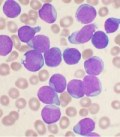 I recently reported on the spit test being developed for autism spectrum disorder (ASD). It’s in the very early stages of development (this is not an antenatal test), but the details were certainly of interest to the target audience on the SpecNOW site.
I recently reported on the spit test being developed for autism spectrum disorder (ASD). It’s in the very early stages of development (this is not an antenatal test), but the details were certainly of interest to the target audience on the SpecNOW site.
Of course, the mainstream media picked up on the news of the possibility of such a simple test for autism too and the publication also coincided with literary revelations about Paul Dirac, the twentieth century physicist often labelled the British Einstein, and a debate in The Guardian newspaper concerning the possibility of antenatal testing and independent research by Cambridge University’s Simon Baron-Cohen. Although Baron-Cohen’s work is not looking for an antenatal test for autism, it has certainly led to a call for a public debate on the ethics of such a test.
Obviously, in the course of writing my SpecNOW item I contacted Massimo Castagnola of the Università Cattolica in Rome, Italy, whose team is behind the saliva test and asked him about its potential.
“The analysis of saliva, at least at the moment of the research, cannot detect a subject with autism spectrum disorder (ASD),” he told me, “Diagnosis of ASD is always a task of complex neuropsychiatric tests, made by a specialist in infant neuropsychiatry.” Indeed, Baron-Cohen is on record as saying: “Autistic traits are also normal – it is just a matter of how many of these you have.”
Castagnola explained how his team had discovered that a specific modification of salivary peptides (known as hypo-phosphorylation) is present in the saliva of a small subgroup of ASD patients. Nevertheless, the presence of these abnormal peptides, which suggest a biochemical history of failed protein activation in the patients has high statistical significance).
He pointed out that, “The analysis of a larger group of patients and controls will be necessary in order to confirm the results. Interestingly, low levels of phosphorylation of salivary peptides were observed by us in a previous study performed on saliva of pre-term newborns.”
Phosphorylation, a metabolic process that activates many proteins is under the control of an enzyme known as Golgi-casein kinase. This is a pleiotropic enzyme, which is expressed in several tissues other than salivary glands, including the brain.
“Our hypothesis is that the observed hypo-phosphorylation could be connected to a defect of the kinase, and the defect could reflect not only in hypo-phosphorylation of salivary peptides [which has no effects on the mouth], but also in the hypo-phosphorylation of proteins involved in brain development either during foetal growth or in the first months of life. This is a clue for the molecular basis of disease, at least for a subgroup of patients,” Castagnola told me.
Importantly, hypo-phosphorylation of salivary peptides is not necessarily indicative of ASD, as I mention in my SpecNOW article. Only 18 out of 27 had this characteristic of their salivary peptides. But, hypo-phosphorylation might be present because of another medical problem that may have neurological and/or multifactorial origin.
“Diagnosis of ASD is complex, and ASD is almost certainly a multi-factorial disease,” Castagnola adds, “It would be important to have an early biochemical marker, able to discriminate between different groups of ASD patients.”
There are, however, no practical therapeutic consequences of the Italian research at the moment. “If future research provides further information, we hope that salivary analysis could be useful in order to address a subgroup of ASD patients toward specific therapies,” Castagnola says. “In principle, the non-invasiveness of the test should allow its wide use.”
However, even if such a test were demonstrated to have clinical efficacy, there is currently no therapy that could be applied to follow up detection of salivary hypo-phosphorylation state. Perhaps also of concern is that some ASD patients tend not to be cooperative, have a delicate neuropsychiatric asset, and using the test could disturb the patient. “The test, at least at the moment, should be performed only in very specialistic centres that would go in deep on the molecular basis of the disease,” adds Castagnola.
In the Guardian discussion, which is not related directly to the saliva test work, piece, Michael Fitzpatrick suggests that worrying about antenatal testing is premature, because there are dangerous procedures being performed on children now. Apparently, the anti-vaccine lobby and others claim that autism in boys is associated with premature puberty and with toxic levels of mercury, from vaccines and environmental pollution (Baron-Cohen’s research has not yet proven a connection between exposure to high levels of testosterone during foetal development). These testosterone and toxic metal theories have led to the emergence of some very dangerous quackery including chelation therapy to remove heavy metals from the body (of course chelates will also mop up vital trace elements too) and the use of testosterone inhibitors. The claims of at least one advocate, Mark Geier, have been dismissed as intellectually dishonest in a 2006, court case, reports Fitzpatrick.
Indeed, Baron-Cohen has written to The Guardian in an effort to rebalance what he sees as problems with the reporting in The Guardian of his research. His study, published in the British Journal of Psychiatry was not, he says, about prenatal screening for autism, and indeed did not test children with autism. “The aim of the study was simply to understand the basic mechanisms causing individual differences in autistic traits in an otherwise typical sample,” he says. But, maybe he protests too much, the BPS press release quotes him as saying such a test would require thousands not hundreds of subjects and then adds, “Our ongoing collaboration with the Biobank in Denmark will enable us to test that link in the future.” So it certainly looks like his team is working towards an antenatal test for autism.
Moreover, a BBC article by Baron-Cohen published before The Guardian reports and discussion certainly makes that clear. From his introduction: “The prospect of a prenatal test for autism, allowing couples to choose whether to have a baby with the condition, is coming closer. And with it also comes the possibility of a prenatal drug treatment being developed.” In that article Baron-Cohen warns that “caution is needed to ensure associated talents, like numerical abilities, are not lost if the test or a ‘cure’ become available.”
 Massimo Castagnola, Irene Messana, Rosanna Inzitari, Chiara Fanali, Tiziana Cabras, Alessandra Morelli, Anna Maria Pecoraro, Giovanni Neri, Maria Giulia Torrioli, Fiorella Gurrieri (2008). Hypo-Phosphorylation of Salivary Peptidome as a Clue to the Molecular Pathogenesis of Autism Spectrum Disorders Journal of Proteome Research, 7 (12), 5327-5332 DOI: 10.1021/pr8004088
Massimo Castagnola, Irene Messana, Rosanna Inzitari, Chiara Fanali, Tiziana Cabras, Alessandra Morelli, Anna Maria Pecoraro, Giovanni Neri, Maria Giulia Torrioli, Fiorella Gurrieri (2008). Hypo-Phosphorylation of Salivary Peptidome as a Clue to the Molecular Pathogenesis of Autism Spectrum Disorders Journal of Proteome Research, 7 (12), 5327-5332 DOI: 10.1021/pr8004088

 My latest science news updates are now available on SpectroscopyNOW.com and ChemWeb.com, covering a wide range topics from date rape drug analysis to DNA that behaves parasitically and could underpin speciation and evolution:
My latest science news updates are now available on SpectroscopyNOW.com and ChemWeb.com, covering a wide range topics from date rape drug analysis to DNA that behaves parasitically and could underpin speciation and evolution: I recently reported on the spit test being developed for autism spectrum disorder (ASD). It’s in the very early stages of development (this is not an antenatal test), but the details were certainly of interest to the target audience on the SpecNOW site.
I recently reported on the spit test being developed for autism spectrum disorder (ASD). It’s in the very early stages of development (this is not an antenatal test), but the details were certainly of interest to the target audience on the SpecNOW site. First story to fall under the gaze of The Alchemist this week is synthetic HDL, a potential alternative therapy for cholesterol problems wrought through gold nanotechnology. Next, we hear of atomic ink that avoids the push and shove of microscopic manipulation by introducing the metallic nano swap meet.
First story to fall under the gaze of The Alchemist this week is synthetic HDL, a potential alternative therapy for cholesterol problems wrought through gold nanotechnology. Next, we hear of atomic ink that avoids the push and shove of microscopic manipulation by introducing the metallic nano swap meet. Yellow and black bile were considered by the ancients as two of the four vital humours of the human body along with phlegm and blood. Ancient and mediaeval Greco-Roman alternative medicine. Imbalances in these humours caused illness. The Greek names for the terms gave rise to the words “choler” (bile) [the prefix in cholesterol, of course] and “melancholia” (black bile). Excessive bile was supposed to produce an aggressive temperament, known as “choleric” and cause “biliousness.” Depression and other mental illnesses (melancholia) were ascribed to a bodily surplus of black bile.
Yellow and black bile were considered by the ancients as two of the four vital humours of the human body along with phlegm and blood. Ancient and mediaeval Greco-Roman alternative medicine. Imbalances in these humours caused illness. The Greek names for the terms gave rise to the words “choler” (bile) [the prefix in cholesterol, of course] and “melancholia” (black bile). Excessive bile was supposed to produce an aggressive temperament, known as “choleric” and cause “biliousness.” Depression and other mental illnesses (melancholia) were ascribed to a bodily surplus of black bile. The first 2009 issue of SpectroscopyNOW is now available:
The first 2009 issue of SpectroscopyNOW is now available: This week, The Alchemist is digging in the dirt to find out about the carbon cycle and climate change, taking his
This week, The Alchemist is digging in the dirt to find out about the carbon cycle and climate change, taking his